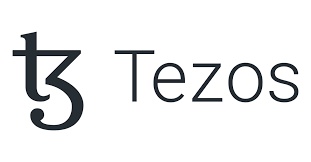Introduction: Tezos is a unique blockchain platform that offers self-amendment capabilities and decentralized governance. At the heart of this innovative protocol lies the Tezos node—a fundamental component responsible for maintaining the network, validating transactions, and facilitating seamless governance. In this article, we will explore the functionalities and significance of the Tezos node, its deployment process, and the role it plays in enabling self-amendment and decentralized decision-making.
Understanding Tezos Node: The Tezos node refers to the software program that runs on a machine and participates in the Tezos network. It acts as a peer-to-peer node, communicating with other nodes to propagate and validate transactions, as well as to maintain consensus. The Tezos node is built on the Liquid Proof-of-Stake (LPoS) consensus algorithm, where participants can delegate their tokens to bakers (block validators) and receive rewards in return.
The Tezos node has two primary functions: validation and governance. Validation involves verifying transactions and blocks, ensuring they adhere to the protocol rules, and validating cryptographic signatures. This process maintains the integrity and security of the Tezos blockchain. Additionally, the Tezos node plays a crucial role in the platform's self-amendment capability. It enables on-chain governance, where stakeholders can propose and vote on protocol upgrades, avoiding contentious hard forks.
Significance of Tezos Node (approx. 130 words): The Tezos node serves as the backbone of the Tezos blockchain ecosystem, ensuring its security, consensus, and governance. By running a Tezos node, individuals actively participate in the governance process, making decisions that shape the platform's future. This decentralized governance model empowers token holders, fostering inclusivity and reducing the influence of centralized entities.
Furthermore, Tezos nodes contribute to network resilience. By maintaining a copy of the blockchain and participating in consensus, they enhance the security and robustness of the Tezos network. The decentralized nature of the nodes also minimizes the risk of censorship or manipulation.
Tezos nodes support a more efficient and transparent blockchain ecosystem. Validators, through the Tezos node, have the ability to propose protocol upgrades and participate in the voting process. This enables the platform to adapt and evolve over time, incorporating improvements and addressing the changing needs of its users.
Conclusion: The Tezos node plays a pivotal role in the Tezos blockchain ecosystem, enabling validation, governance, and self-amendment capabilities. By running Tezos nodes, participants actively contribute to the consensus and governance processes, shaping the future direction of the platform. The decentralized nature of Tezos nodes enhances security, while the self-amendment feature fosters innovation and adaptability without contentious hard forks.
As Tezos gains prominence as a self-amending blockchain platform, the significance of the Tezos node cannot be overstated. By actively participating in consensus and governance, individuals contribute to a more inclusive and transparent ecosystem. The Tezos node serves as the backbone of this innovative blockchain, empowering participants to collectively govern and shape the platform's growth, ensuring its continued success as a dynamic and adaptable blockchain solution.


No comments yet